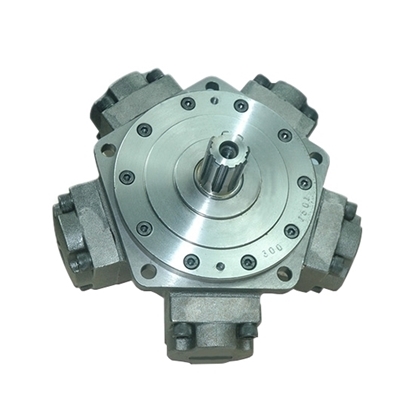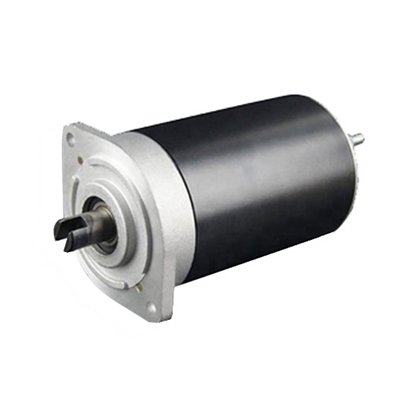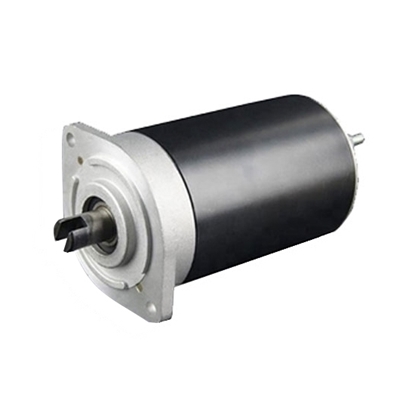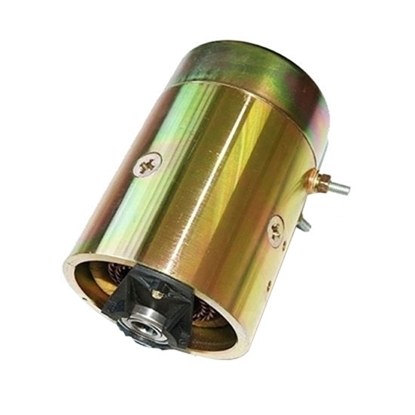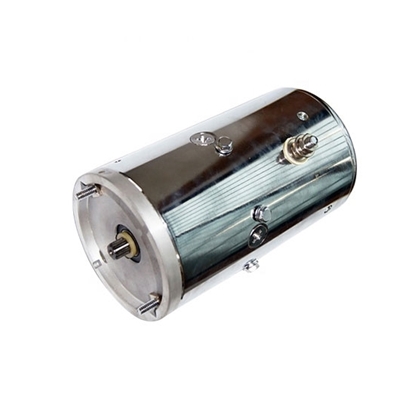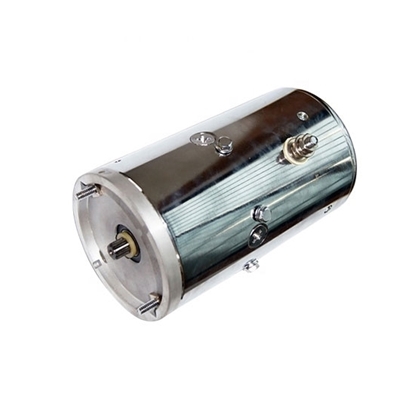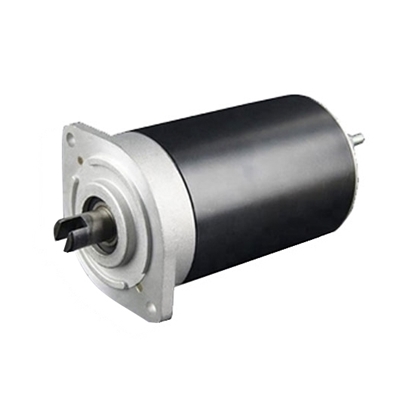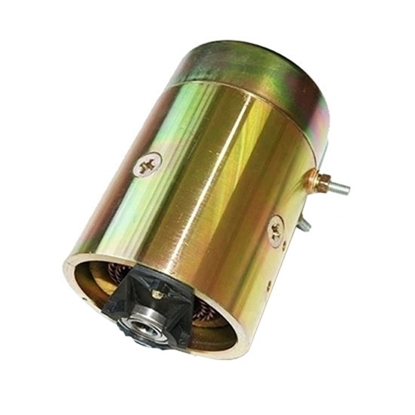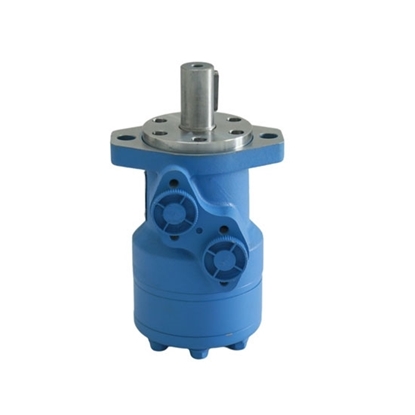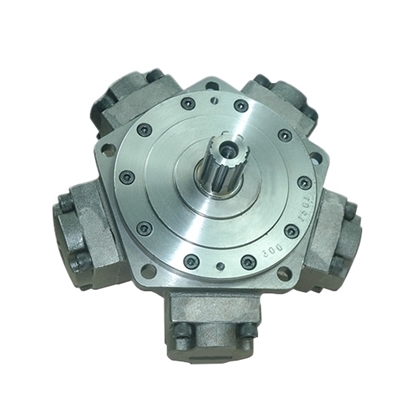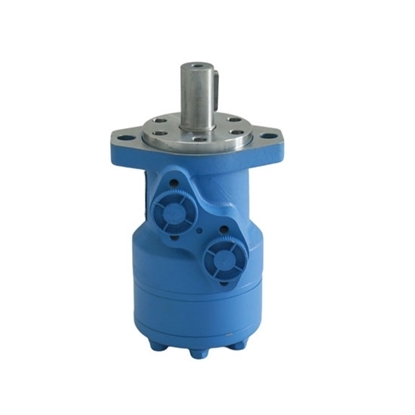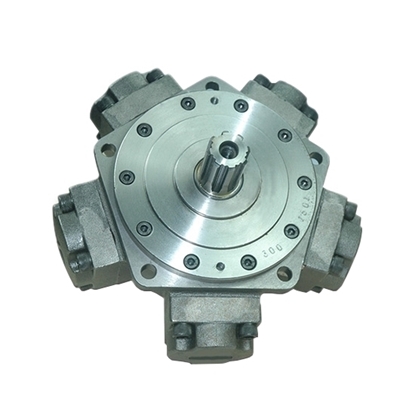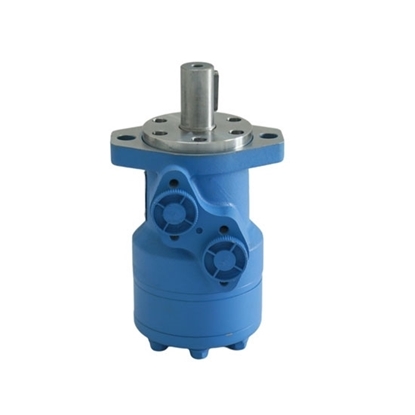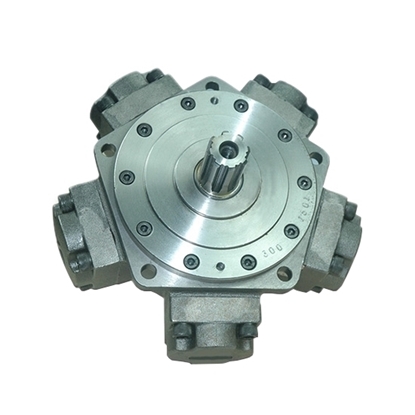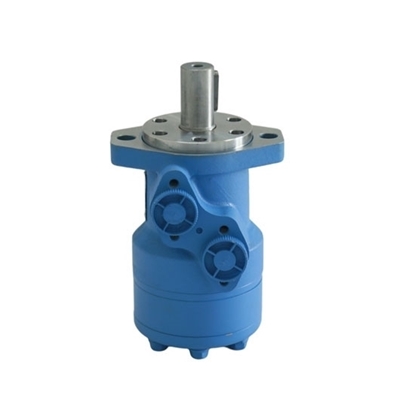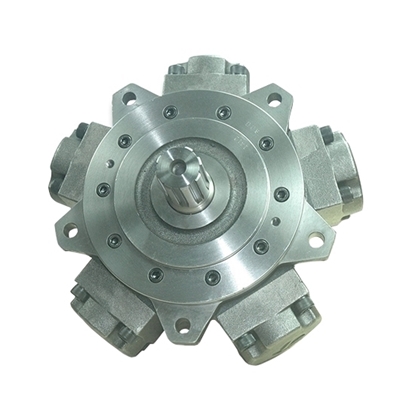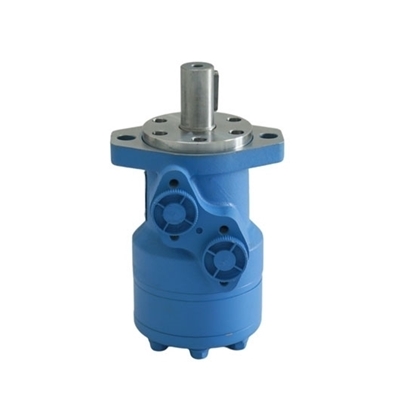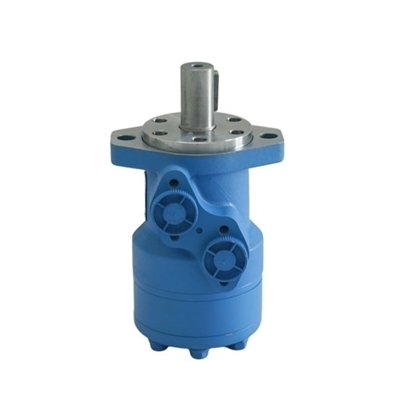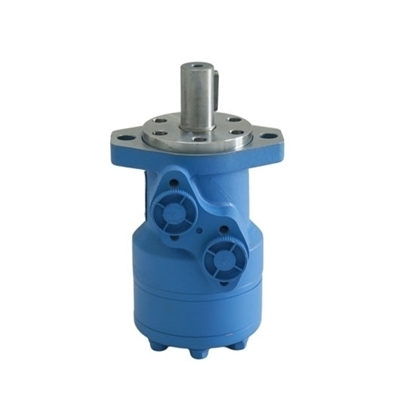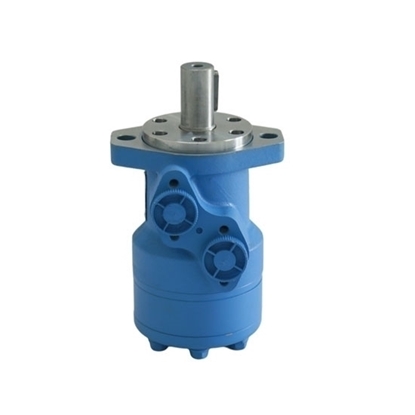Hydraulic Motors
10 hp 60-160cc Radial Piston Hydraulic Motor, 20MPa
12V 500W Hydraulic Pump Motor, 2500rpm
12V 800W Hydraulic Pump Motor, 4000rpm
2 hp (1.6 kW) 12V Hydraulic Pump Motor, 2600rpm
2.5 kW 12V Hydraulic Pump Motor, 2200rpm
2.8 kW 24V Hydraulic Pump Motor, 2200rpm
24V 500W Hydraulic Pump Motor, 2500rpm
3 hp (2.2 kW) 24V Hydraulic Pump Motor, 2600rpm
Hydraulic Orbital Motor, 50cc/rev
15 hp 100-280cc Radial Piston Hydraulic Motor, 25MPa
Hydraulic Orbital Motor, 63cc/rev
20 hp 175-400cc Radial Piston Hydraulic Motor, 20MPa
Hydraulic Orbital Motor, 80cc/rev
40 hp 400-750cc Radial Piston Hydraulic Motor, 25MPa
Hydraulic Orbital Motor, 100cc/rev
50 hp 600-1000cc Radial Piston Hydraulic Motor, 20MPa
Hydraulic Orbital Motor, 125cc/rev
Hydraulic Orbital Motor, 160cc/rev
Hydraulic Orbital Motor, 200cc/rev
Hydraulic Orbital Motor, 250cc/rev
- 1
- 2
A hydraulic motor is a mechanical actuator that converts hydraulic pressure and flows into torque and angular displacement (rotation). The hydraulic motor is the rotary counterpart of the hydraulic cylinder as a linear actuator. There are high torque, high speed and high-efficiency hydraulic radial piston motors in ATO, optional working power from 8 to 50 hp (6k to 38kW), rated pressure 2300~3600 psi, speed range 15 to 1500 rpm, ATO radial piston motor with competitive price and wide applications.
ATO's hydraulic motor types
According to its structure type, hydraulic motors can be divided into gear, vane, piston hydraulic motor and other types. ATO has a wild range of hydraulic motors to meet your buying requirements. Each has its specific purpose and applicable working conditions. This time, some of ATO's bestselling hydraulic motors are presented below for you to purchase.
 The orbital motor is a hydraulic motor of internal meshing cycloid gear type. The ring gear is fixedly connected with the housing, and the oil entering from the oil port pushes the rotor to revolve around a center point. This slow-rotating rotor drives the output through a splined shaft called a orbital motor. It is mainly used in the slewing mechanism of various machinery such as agriculture, fishery, light industry, lifting and transportation, mining, and construction machinery. Our website have 50 to 395 cc/rev displacement orbital motors on sale for you to choose from.
The orbital motor is a hydraulic motor of internal meshing cycloid gear type. The ring gear is fixedly connected with the housing, and the oil entering from the oil port pushes the rotor to revolve around a center point. This slow-rotating rotor drives the output through a splined shaft called a orbital motor. It is mainly used in the slewing mechanism of various machinery such as agriculture, fishery, light industry, lifting and transportation, mining, and construction machinery. Our website have 50 to 395 cc/rev displacement orbital motors on sale for you to choose from.
 Hydraulic pump is a hydraulic component that provides pressurized liquid for hydraulic transmission. Its function is to convert the mechanical energy of power machines (such as electric motors and internal combustion engines) into liquid pressure energy. The working principle of the hydraulic pump is that the movement changes the volume of the pump cavity, thereby compressing the fluid so that the fluid has pressure energy. If you're interested in this product, we also have hydraulic pump of different power sizes on sale for you to buy.
Hydraulic pump is a hydraulic component that provides pressurized liquid for hydraulic transmission. Its function is to convert the mechanical energy of power machines (such as electric motors and internal combustion engines) into liquid pressure energy. The working principle of the hydraulic pump is that the movement changes the volume of the pump cavity, thereby compressing the fluid so that the fluid has pressure energy. If you're interested in this product, we also have hydraulic pump of different power sizes on sale for you to buy.
 The radial piston motor is a low-speed and high-torque motor. Radial piston motor have good reversing characteristics for quiet motor operation. Its main features are large output torque and good low-speed stability (stable operation below 10r/min, and some can be as low as 0.5r/min), so it can work directly with Institutional connections. Radial piston motors are usually divided into two types, namely single-acting swing cylinder type and multi-acting inner curve type. ATO can provide you with radial piston motors of various powers to purchase.
The radial piston motor is a low-speed and high-torque motor. Radial piston motor have good reversing characteristics for quiet motor operation. Its main features are large output torque and good low-speed stability (stable operation below 10r/min, and some can be as low as 0.5r/min), so it can work directly with Institutional connections. Radial piston motors are usually divided into two types, namely single-acting swing cylinder type and multi-acting inner curve type. ATO can provide you with radial piston motors of various powers to purchase.
After determining the type of hydraulic motor, several specifications that meet the needs can be selected according to the required rotational speed and torque. First, the corresponding pressure drop, flow rate and efficiency are calculated through the characteristic curves of various specifications, and comprehensive analysis could be carried out.
Advantages of hydraulic motors
- High power-weight ratio: The ratio of the energy transmitted by the hydraulic motor to its own weight is very small compared to other transmission methods.
- Good starting performance: It is easy to obtain larger force and torque. Its starting torque is large.
- Easy to control: It can start and stop quickly and frequently, forward and reverse, and has little impact on current;
- Automatic control of overload accidents.
- Strong environmental adaptability: It is adaptable to temperature, dust, water-rich rings, etc.
6 Tips for using hydraulic motors
When full load starting is required, attention should be paid to the hydraulic motor starting torque short value. Because the starting torque of the hydraulic motor is shorter than the rated torque, if it is ignored, it will make the I-operating mechanism unable to operate.
Since the back pressure of the hydraulic motor is higher than the atmospheric pressure, the oil drain pipe of the motor must be led back to the oil tank separately and cannot be connected with the oil return pipe of the hydraulic motor.
Since the hydraulic motor always leaks, closing the inlet and outlet of the hydraulic motor to brake, it will still slip slowly. When braking for a long time is required, an additional anti-rotation device should be set up.
When the inertia of the driven part is large (the moment of inertia is large or the rotational speed is high), if it is required to achieve braking or smoothing in a short time, a safety valve (buffer valve) should be set in the oil return circuit to prevent sudden hydraulic damage accident caused by pressure shock.
When the hydraulic motor is used as the power part of the hoisting or traveling device, a speed limit valve must be set to prevent the heavy object from falling rapidly or the vehicle and other traveling mechanism from overspeed when going downhill, which may cause serious accidents.
When using a fixed-value motor, if you want to start and stop smoothly, you should use the necessary pressure control or flow control methods in the circuit design.
How to reduce the loss of hydraulic motor pressure energy?
To reduce the pressure energy loss when using a hydraulic motor, we must first start from the inside, and reduce the power loss while reducing the internal pressure loss of the system. To solve this problem, the pressure loss of the internal flow channel of the component can be improved, and the integrated circuit and casting flow channel can be used. At the same time, it is also necessary to reduce or eliminate the throttling loss of the system, minimize the overflow required for non-safety, and avoid using a throttling system to adjust the flow and pressure.
In the use of materials, materials manufactured by static pressure technology and new sealing materials can be used, which can effectively reduce friction losses. Maintenance during use is indispensable. Maintain the hydraulic motor in time to prevent pollution from affecting the life and reliability of the motor. New pollution detection methods must be developed to measure pollution online. It must be adjusted in time, and lag is not allowed, so as to avoid Losses caused by untimely processing.
What affects the speed of the hydraulic motor?
The low and stable speed of the hydraulic motor is an important technical index for the hydraulic motor manufacturer, which directly affects the working performance and life of the machine. The determinant of the lower and stable speed of the hydraulic motor is the minimum value of the lower and stable working speed of the hydraulic system with the hydraulic motor as the power actuator, which is mainly determined by the following factors.
- The system adopts the qmc characteristic of the leakage flow and the tmf characteristic of the friction torque loss in the low speed area of the hydraulic motor.
- The flow regulating device of the system includes pump control, valve control, and flow valve speed regulating valve. Relative to the flow required in the low-speed area of the motor, the output flow characteristics of small flow. Workflow characteristics that affect the motor speed equation.
- Drag or control of the system. The load characteristic of the object. It affects the quality management and TMF characteristics of the motor and the workflow characteristics of the speed governor.
- The control method of the system, such as open-loop system, closed-loop servo system, etc., affects the automatic speed regulation characteristics in the low-speed fluctuation region.
How to choose a hydraulic motor?
1. The main basis for selecting a hydraulic motor is the host's requirements for the hydraulic system, such as torque, speed, working pressure, displacement, shape and connection size, volumetric efficiency, total efficiency, quality, price, supply and convenience of use and maintenance Wait.
2. There are many types of hydraulic motors. The characteristics are different, and the appropriate hydraulic motor should be selected according to the specific use and working conditions. For low-speed operation, a low-speed motor can be selected, and a high-speed motor acceleration and deceleration device can also be used. in the choice of two options. It should be selected according to the structure and space conditions, equipment cost, and whether the driving torque is reasonable.
3. After determining the type of motor used, several specifications that can meet the needs can be selected from the hydraulic motor product series according to the required speed and torque, and then comprehensive analysis is carried out, that is, first use the characteristic curves of various specifications to check. Calculate (or calculate) the corresponding pressure drop, flow and efficiency; then, use the technical and economic evaluation to determine the specific specifications, if the original cost is the most important. Then, a motor that can meet the torque requirements and make the system flow smaller and lower pressure should be selected, which can make the hydraulic source, control valve and pipeline size smaller. If the operating cost is the most important, the motor with high total efficiency should be selected; if the lifespan is the most important, the motor with the smallest pressure drop should be selected, and the final product selected is mostly a compromise of the above solutions.
Precautions for using hydraulic motors
- Hydraulic motors are usually allowed to work at a pressure that exceeds the rated pressure by 20%-50% in a short time, but the instantaneous maximum pressure cannot occur at the same time as the maximum speed.
- The back pressure of the oil return circuit of the hydraulic motor has a certain limit. When the back pressure is large, a leakage oil pipe must be installed.
- In general, the maximum torque and maximum speed of the hydraulic motor should not occur at the same time. The actual speed should not be lower than the minimum speed of the motor to avoid crawling. When the rotational speed required by the system is low, and the performance parameters such as rotational speed and torque of the motor are not easy to meet the working requirements, a deceleration mechanism can be added between the motor and the main engine it drives. In order to run smoothly at very low speeds, the leakage of the motor must be constant and there must be a certain oil return back pressure.
- In order to prevent cavitation or loss of braking ability of the brake motor working as a pump, it should be ensured that the oil suction port of the motor has sufficient charge oil pressure at this time. When the hydraulic motor drives a large inertia load, a bypass check valve connected in parallel with the motor should be installed in the hydraulic system to replenish oil, so as to prevent the inertial motor from running out of oil during shutdown.
- For hydraulic motors that cannot withstand additional axial and radial forces, or when the hydraulic motor can withstand additional axial and radial forces, but the actual axial and radial forces of the load are greater than the allowable axial or radial forces of the hydraulic motor , should consider using elastic coupling to connect the motor output shaft and working mechanism. For motors that need to run at low speed, check their minimum stable speed.
- To lock the motor for extended periods of time to prevent movement of the load, a spring loaded hydraulic release of the mechanical brake should be used on the motor shaft.
- Hydraulic motor should not be disassembled casually after failure occurs during operation.

